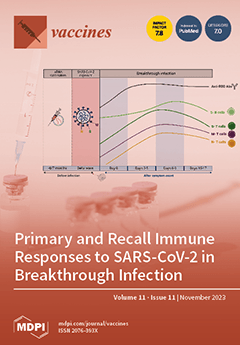Open AccessReview
CAR-T-Cell Therapy in Multiple Myeloma: B-Cell Maturation Antigen (BCMA) and Beyond
by
Abhinava K. Mishra, Ashna Gupta, Gunjan Dagar, Dayasagar Das, Abhijit Chakraborty, Shabirul Haque, Chandra Prakash Prasad, Archana Singh, Ajaz A. Bhat, Muzafar A. Macha, Moez Benali, Kamal S. Saini, Rebecca Ann Previs, Deepak Saini, Dwaipayan Saha, Preyangsee Dutta, Aseem Rai Bhatnagar, Mrinalini Darswal, Abhishek Shankar and Mayank Singh
Cited by 24 | Viewed by 7609
Abstract
Significant progress has been achieved in the realm of therapeutic interventions for multiple myeloma (MM), leading to transformative shifts in its clinical management. While conventional modalities such as surgery, radiotherapy, and chemotherapy have improved the clinical outcomes, the overarching challenge of effecting a
[...] Read more.
Significant progress has been achieved in the realm of therapeutic interventions for multiple myeloma (MM), leading to transformative shifts in its clinical management. While conventional modalities such as surgery, radiotherapy, and chemotherapy have improved the clinical outcomes, the overarching challenge of effecting a comprehensive cure for patients afflicted with relapsed and refractory MM (RRMM) endures. Notably, adoptive cellular therapy, especially chimeric antigen receptor T-cell (CAR-T) therapy, has exhibited efficacy in patients with refractory or resistant B-cell malignancies and is now also being tested in patients with MM. Within this context, the B-cell maturation antigen (BCMA) has emerged as a promising candidate for CAR-T-cell antigen targeting in MM. Alternative targets include SLAMF7, CD38, CD19, the signaling lymphocyte activation molecule CS1, NKG2D, and CD138. Numerous clinical studies have demonstrated the clinical efficacy of these CAR-T-cell therapies, although longitudinal follow-up reveals some degree of antigenic escape. The widespread implementation of CAR-T-cell therapy is encumbered by several barriers, including antigenic evasion, uneven intratumoral infiltration in solid cancers, cytokine release syndrome, neurotoxicity, logistical implementation, and financial burden. This article provides an overview of CAR-T-cell therapy in MM and the utilization of BCMA as the target antigen, as well as an overview of other potential target moieties.
Full article
►▼
Show Figures






